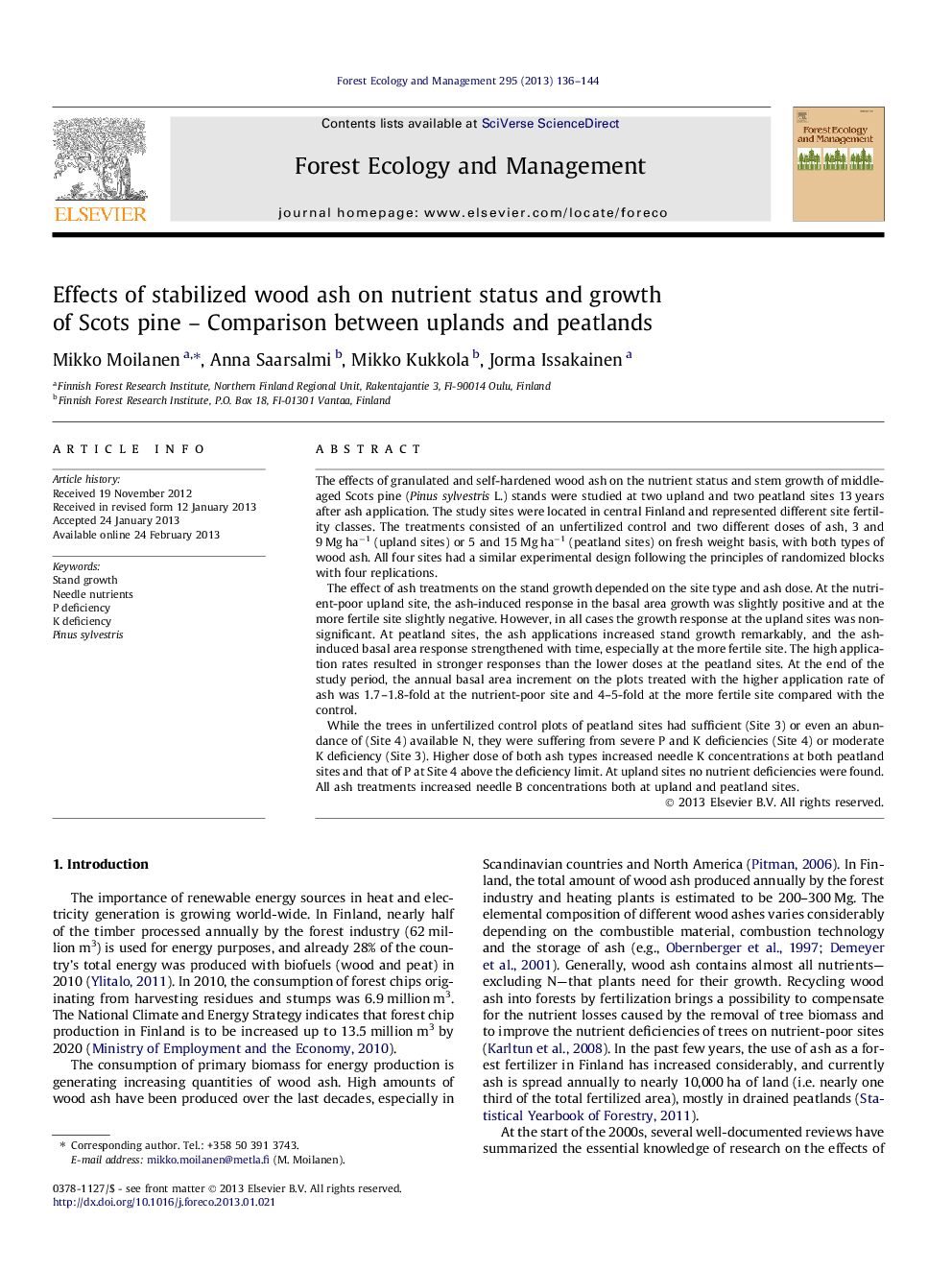| Article ID | Journal | Published Year | Pages | File Type |
|---|---|---|---|---|
| 86860 | Forest Ecology and Management | 2013 | 9 Pages |
The effects of granulated and self-hardened wood ash on the nutrient status and stem growth of middle-aged Scots pine (Pinus sylvestris L.) stands were studied at two upland and two peatland sites 13 years after ash application. The study sites were located in central Finland and represented different site fertility classes. The treatments consisted of an unfertilized control and two different doses of ash, 3 and 9 Mg ha−1 (upland sites) or 5 and 15 Mg ha−1 (peatland sites) on fresh weight basis, with both types of wood ash. All four sites had a similar experimental design following the principles of randomized blocks with four replications.The effect of ash treatments on the stand growth depended on the site type and ash dose. At the nutrient-poor upland site, the ash-induced response in the basal area growth was slightly positive and at the more fertile site slightly negative. However, in all cases the growth response at the upland sites was non-significant. At peatland sites, the ash applications increased stand growth remarkably, and the ash-induced basal area response strengthened with time, especially at the more fertile site. The high application rates resulted in stronger responses than the lower doses at the peatland sites. At the end of the study period, the annual basal area increment on the plots treated with the higher application rate of ash was 1.7–1.8-fold at the nutrient-poor site and 4–5-fold at the more fertile site compared with the control.While the trees in unfertilized control plots of peatland sites had sufficient (Site 3) or even an abundance of (Site 4) available N, they were suffering from severe P and K deficiencies (Site 4) or moderate K deficiency (Site 3). Higher dose of both ash types increased needle K concentrations at both peatland sites and that of P at Site 4 above the deficiency limit. At upland sites no nutrient deficiencies were found. All ash treatments increased needle B concentrations both at upland and peatland sites.
► Effects of wood ash on stem growth and nutrition of Scots pine were studied. ► Granulated and self-hardened wood ash were applied both in upland and peatland sites. ► Both types of ash increased stem growth at peatland sites. ► Growth response was stronger at the more fertile than at less fertile peatland site. ► No essential growth response to wood ash at upland sites were detected.
